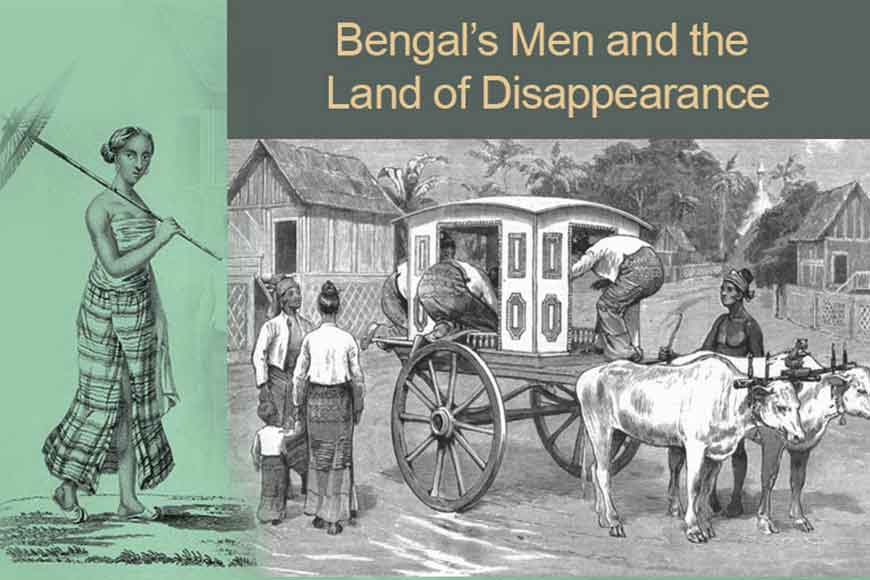Will lost folk genre Rangoom mourn Rohingya disaster

Can a lost genre of folk music mourning the mysterious disappearance of men in ‘RangoomRangeela’ or Myanmar, relate to the recent human disaster of the Rohingya tribe? Since centuries, Chittagong, a part of undivided Bengal under British rule, had witnessed their men leaving for Burma to earn a living. Today, the world silently witnesses a genocide and a return migration from Myanmar to Bangladesh and even to India. The recent disaster is linked to Rohingya insurgents, who attacked police posts in Rakhine state, leading to a violent offensive by the Army. The world has changed from the times when women of Bengal would wait for their men to return from Burma and sing their melancholy songs, paving the way for a new genre of folk songs known as Rangoom. History seems to have forgotten these songs, hardly with any mention in records, any singers to sing them again, or even notes preserved, other than a single record. Just like, the world has forgotten the 1,23,000 persecuted Rohingyas,who fled their homes and crossed the border to neighbouring Bangladesh.
The story of the conflict between Myanmar's Buddhists and Muslims started long ago, in the 19th century. Rakhine historians claim that Rohingya were slaves, settled in Myanmar after the first Anglo-Burmese War in 1824 and are thus foreigners. British colonial authorities encouraged Rohingyas to migrate to Myanmar and used them as cheap labour. In those days, many men from Chittagong sailed down the Karnaphooli River to Rangoon to eke out a living.
The women, waited anxiously as they pined and fretted for their men’s return. They expressed their longing and separation through melancholic songs, that wrenched the heart of the listener. Their songs generated a whole new genre of folk music, known as ‘Rangoom,’ that reverberated down lush fields of Chittagong. There was a time, when Chittagong was famous for the lore of ‘Rangoom Rangeela’or the colourful Rangoom. It was a common parlance that the waves of the Karnaphooli river carried the heartache of lonely women, who yearned to reach the men, living far away from home.
But what exactly is ‘Rangoom?’
In the 19th and 20th century, Burma was a land of opportunities and Bengalis left in hordes to jump-start various business ventures and settle in Rangoon. Renowned novelist Sarat Chandra Chattopadhyay had Rangoon as the backdrop to many of his novels, including Abhaya O Srikanta. Rangoon or ‘Rangoom’ as the rural Bengali women believed, was a land of magic, mystery and occult, that enticed and mesmerized their men to such an extent, that they never felt the urge to return home. The women of ‘Rangoom’ were sorceresses, who bewitched and captured men under their spell.
Thus, women of undivided Bengal lived in constant fear of being abandoned. They offered prayers and appealed to various deities to halt their men’s voyage to ‘Rangoom.’ Mothers would implore their sons to stay back, promising attractive rewards, including a beautiful bride, to put off their journey to ‘Rangoom Rangeela.’
This is how the songs of ‘Rangoom Rangeela’ originated. In the extensive array of Bengali folk songs including Bhatiyali, Jaari, Sari, Baul, Bichhedi etc, there is hardly any mention of Rangeela Rongoom compositions. But not all is lost. Some of the songs are still deeply rooted in the collective memory of contemporary Bengali women and they can recollect a couple of singers who rendered these numbers. One of them is Mohammad Haroon. Not much can be traced about him, nor the notes of his songs, which are lost in the annals of history. However, one of his songs was recorded by HMV in the 1930s on a 78rpm gramophone record, an exceptional song conveying a mother’s pining for her son. The record is relatively small in size, with an orange label and the song itself is a documentation of a lost society.









